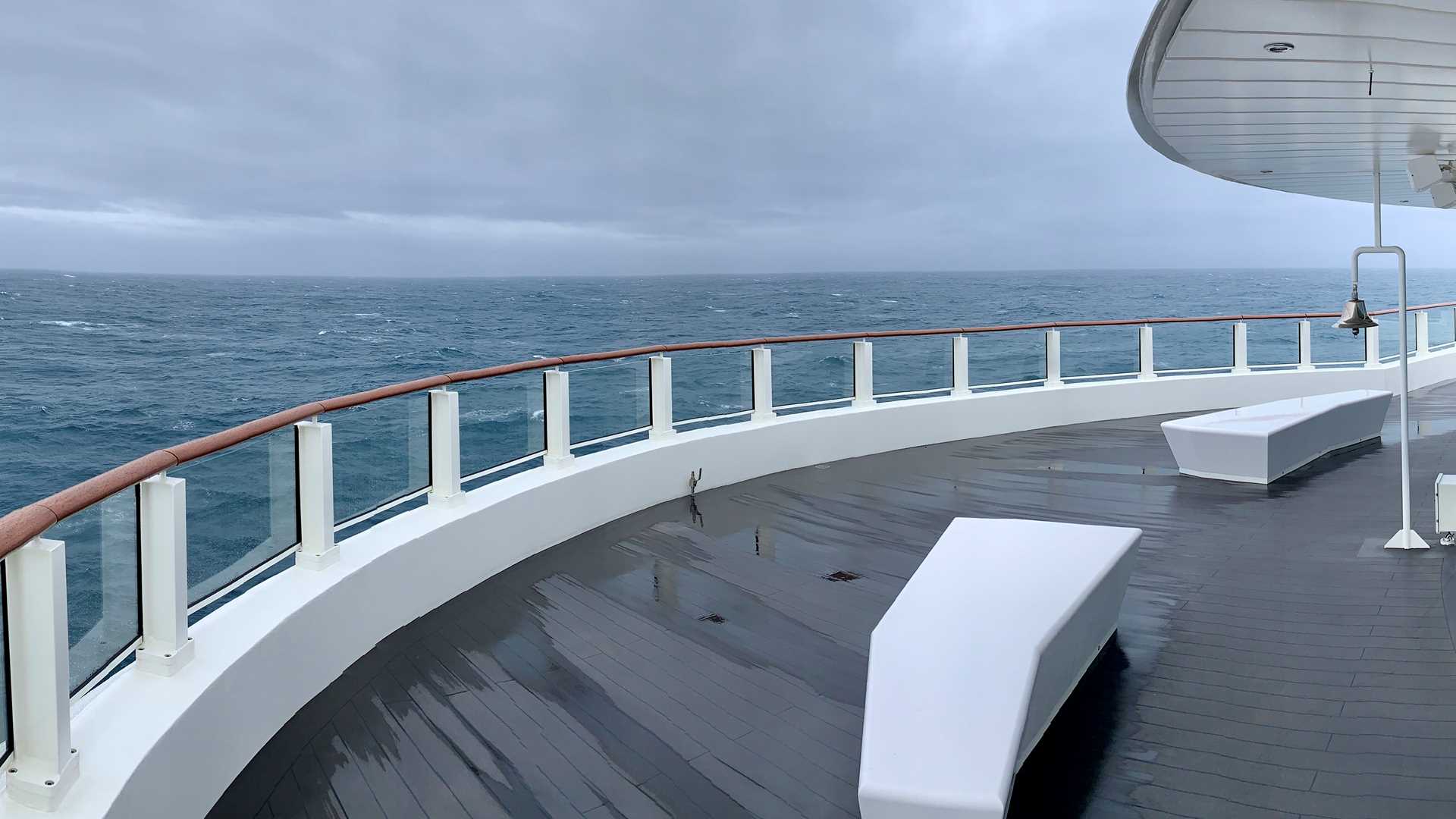The prelude to our expedition voyage was the astounding flight south along the Andes. We flew over perfect volcanic cones in the “long, thin country” of south-central Chile before clouds obscured the view. Our imagination, however, ran with thoughts of the mountains, fjords, and icefields of Patagonia below…and the end of the world in the mountainous region of Isla Grande de Tierra del Fuego…finally ending with a spectacular landing next to the Beagle Channel in Ushuaia, Argentina. Soon, we were on board National Geographic Resolution. Sailing east then south, we moved out of the channel, off the continental shelf, and into the open waters of the infamous Drake Passage. We settled into our cabins, adapting to the pace of the rolling sea and the steady motion of the winds and swells on our starboard quarter. At first, a soft grey sky and dull, dusky seas may seem unexceptional, but throughout this first full day of ship travel, we realized that we were transiting one of the most remarkable wildernesses on the planet, an area of uninterrupted winds and circumpolar currents, home to seabirds and marine organisms that we can barely imagine. By late afternoon, we crossed into the cold waters of the Southern Ocean, moving both officially and biogeographically into the southern polar regions, which are a unique and extreme area of the globe.
- Daily Expedition Reports
- 21 Nov 2022
Drake Passage, 11/21/2022, National Geographic Resolution
- Aboard the National Geographic Resolution
- Antarctica
Rob Edwards, Naturalist
Growing up in the Appalachian foothills of the Garden State, Rob instinctively knew it made a lot more sense to head over the hill into the fields, forests, lakes, and streams behind his house, rather than down the road to the shopping mall in front ...
Read MoreShare Report
Antarctica and Patagonia: Legendary Ice and Epic Fjords
VIEW ITINERARYRelated Reports
3/8/2025
Read
National Geographic Explorer
Torres del Paine
Can the weather get any better? March is mid-fall here, equivalent to October back home. It was still dark when we boarded buses for our full-day tour of southern Chile’s iconic Torres del Paine National Park. We drove north. A rosy glow at the skyline slowly transformed into golden light, casting slanted shadows as the sun rose over the hills to the east, illuminating the mountains in front of us. Some of us were on the panoramic tour, visiting key scenic lookouts and finishing at Rio Serrano for a traditional Patagonian asado, or barbecue. Whole lambs had been roasting over lenga wood fires all morning. The rest of us were on a slightly longer tour, with two lovely hikes breaking up the bus ride. (We still enjoyed the lamb barbecue!) We were blessed with blue skies, sunshine, and no wind, which is very unusual for southern Patagonia. Well, that is, until our second hike, up a high hill called Cerro Condor, where the wind was so strong that it was hard to walk…at times, even to stand! After our delicious barbecue, we headed back to National Geographic Explorer , where it was docked at Puerto Natales, ready to continue our adventure.
3/7/2025
Read
National Geographic Explorer
Bernal Glacier and Kirke Narrows
We were up before sunrise this morning to watch the pink glow as it descended over the mountains and glaciers around us. A short hike brought us to the foot of Bernal Glacier just when the colors were at their most brilliant. We had a second opportunity to stand in awe as we contemplated the sheer power of ice needed to carve this beautiful landscape. Back on board, we stretched our minds in an abstract direction with a workshop on the use of watercolor to document our expedition from Naturalist Shannon Malone. Our timing was planned around our passage through the Kirke Narrows. We needed to pass through at slack tide to navigate the strait, which is barely three times the width of National Geographic Explorer .









